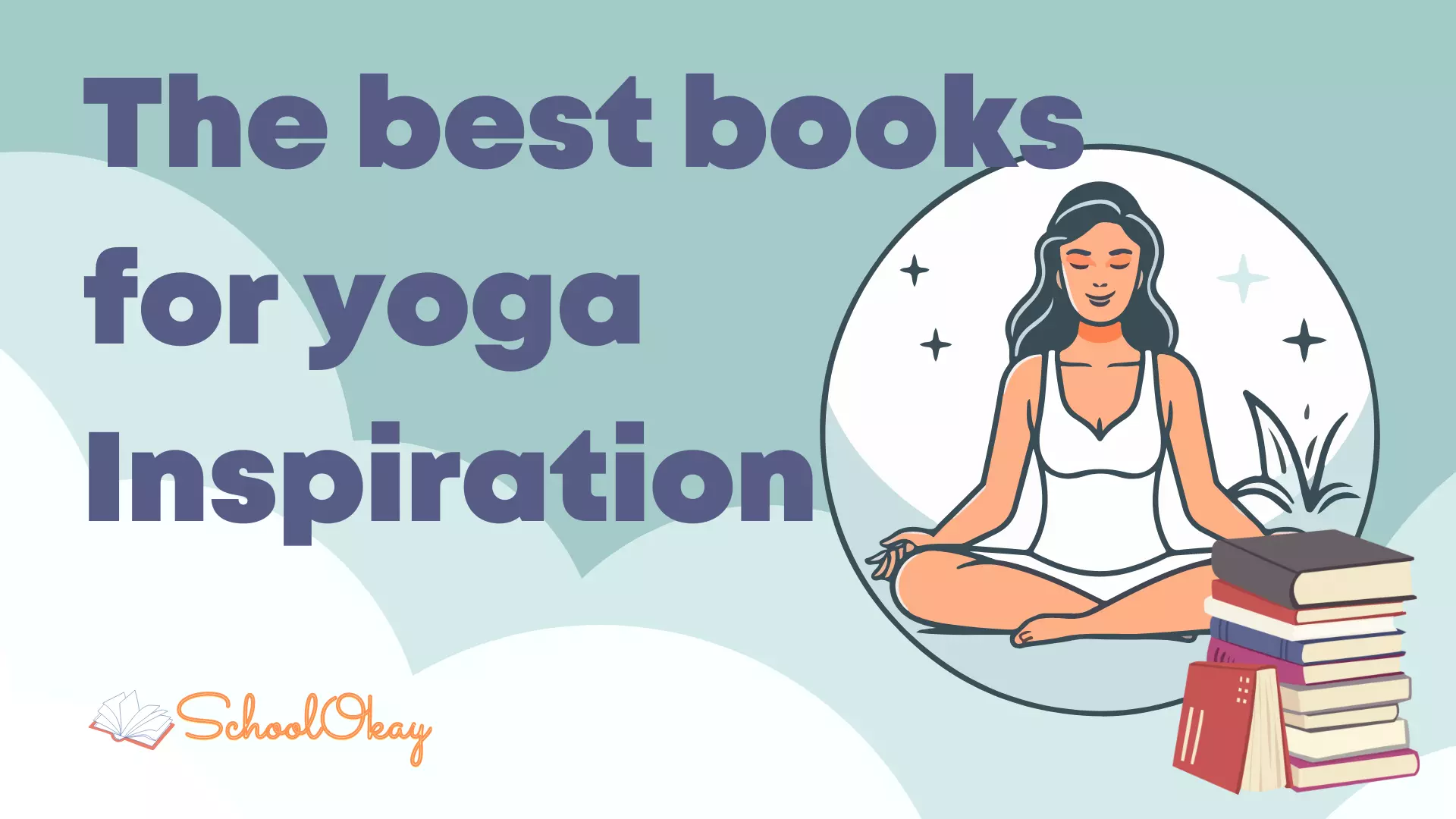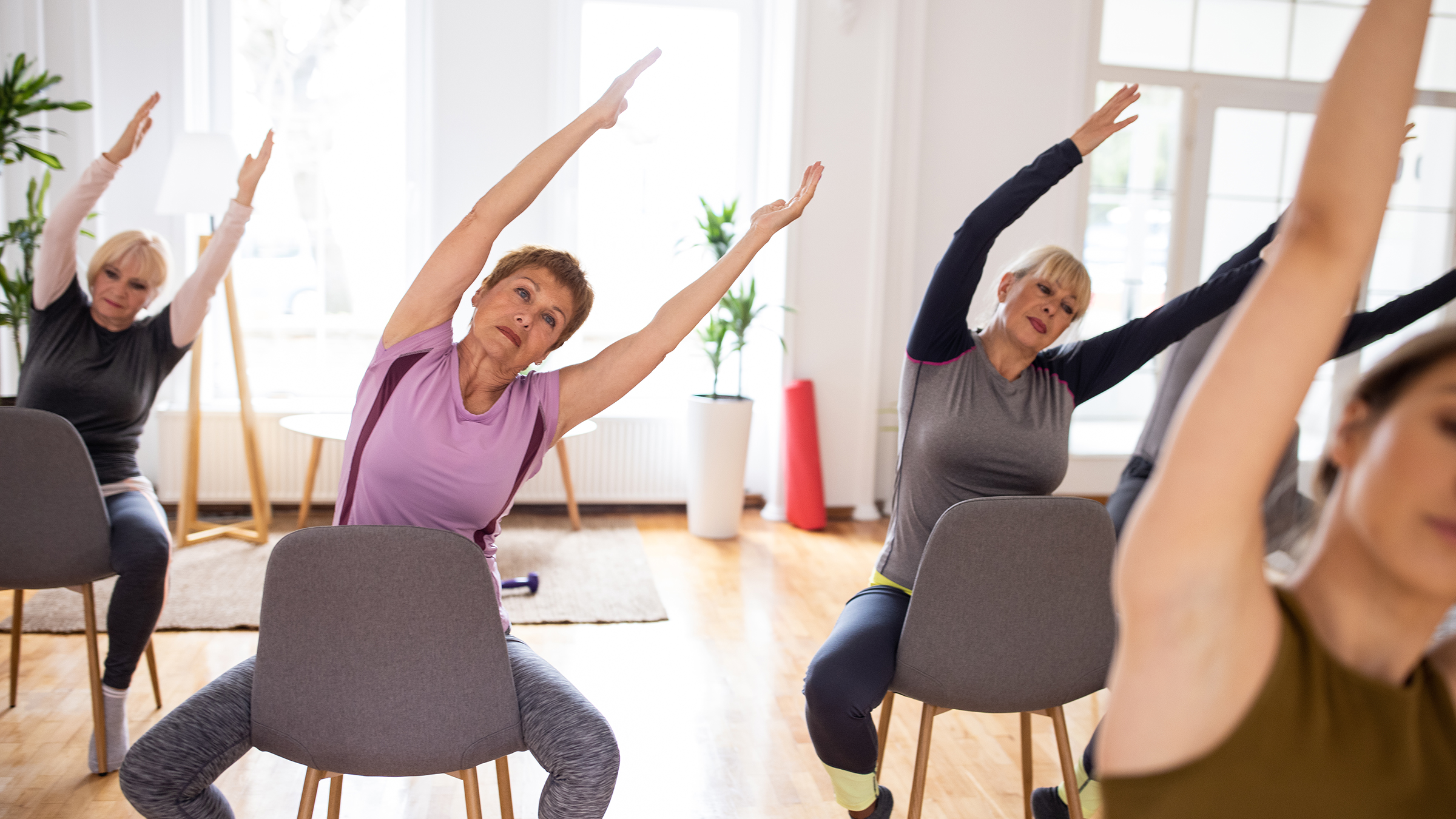Chair Yoga for Specific Needs and Conditions: Best Chair Yoga Books

Chair yoga offers a gentle and accessible approach to yoga practice, making it particularly beneficial for individuals with various physical limitations and health conditions. It adapts traditional yoga poses to be performed while seated, minimizing strain and maximizing comfort and safety. This section explores how chair yoga is modified for specific needs and the advantages it offers to diverse populations.
Adaptations of Chair Yoga Poses for Physical Limitations, Best chair yoga books
Chair yoga’s adaptability is its greatest strength. Many poses can be modified to accommodate various physical limitations. Careful adjustments ensure that everyone can participate, regardless of their physical capabilities. The following examples illustrate how poses are modified for common conditions.
- Arthritis: Seated cat-cow (gentle spinal flexion and extension), seated twists (modified range of motion), and seated forward bends (gentle stretches, avoiding deep bending). Modifications involve reducing the range of motion to prevent pain and joint stress. For example, instead of a full seated twist, a small rotation of the torso can be performed.
- Back Pain: Seated spinal twists (gentle, controlled movements), seated forward bends (with support for the back), and seated mountain pose (focus on posture and alignment). Modifications often involve using props like pillows or blankets for support to alleviate pressure on the spine. A rolled-up towel placed behind the lower back during seated forward bends can offer significant relief.
- Limited Mobility: Seated breathing exercises (focus on deep, diaphragmatic breathing), seated arm raises (modified range of motion), and gentle seated stretches (using minimal movement). For those with limited mobility, the focus shifts towards breathwork and gentle movements within their comfort zone. Chair supports and assistance from a caregiver may be beneficial.
Benefits of Chair Yoga for Specific Populations
For seniors, chair yoga offers improved balance, flexibility, and strength, reducing the risk of falls and improving overall well-being. It promotes better cardiovascular health and cognitive function, enhancing quality of life. Many seniors experience increased confidence and a sense of accomplishment from their practice.
For individuals with disabilities, chair yoga provides a safe and accessible way to engage in physical activity, improving range of motion, strength, and flexibility without the risk of injury associated with more strenuous activities. It can help manage pain, improve mood, and foster a sense of community. The adapted poses cater to a wide range of disabilities, making it inclusive and beneficial.
For those recovering from injuries, chair yoga offers a gentle way to regain strength and flexibility without putting undue stress on the healing tissues. It can aid in improving posture, reducing pain, and promoting overall physical rehabilitation. The controlled movements and modifications allow for gradual progress, promoting healing and recovery.
Sample Chair Yoga Sequence for Beginners
This sequence is designed for beginners and emphasizes proper form and breathing techniques. Remember to listen to your body and stop if you feel any pain. Each pose should be held for 5-10 breaths unless otherwise specified.
1. Seated Mountain Pose: Sit tall with your feet flat on the floor, spine straight, and shoulders relaxed. Inhale deeply, lengthen your spine, and exhale slowly.
2. Seated Forward Bend: Inhale and lengthen your spine. Exhale and gently bend forward from the hips, keeping your back straight as much as possible. Rest your hands on your thighs or shins.
3. Seated Twist: Inhale and lengthen your spine. Exhale and gently twist your torso to the right, placing your right hand on the outside of your left thigh and your left hand behind you for support. Inhale back to center and repeat on the left side.
4. Shoulder Rolls: Gently roll your shoulders forward in a circular motion 5 times, then reverse the direction and roll backward 5 times.
5. Arm Raises: Inhale and raise your arms to the sides, keeping your shoulders relaxed. Exhale and lower your arms. Repeat several times.
6. Seated Cat-Cow: Inhale and arch your back slightly, lifting your chest. Exhale and round your spine, tucking your chin to your chest. Repeat several times.
7. Seated Meditation: Find a comfortable seated position, close your eyes, and focus on your breath. Observe the natural rhythm of your breath without trying to control it.
Creating Your Own Chair Yoga Practice

Designing your own chair yoga routine is a fantastic way to tailor your practice to your specific needs and preferences. It empowers you to take control of your well-being and enjoy the benefits of yoga in a way that feels comfortable and effective. Remember, consistency is key, so start small and gradually increase the intensity and duration of your practice as you feel more comfortable. Listen to your body and don’t push yourself too hard, especially when beginning.
Designing a Personalized Chair Yoga Routine
Creating a personalized chair yoga routine involves a thoughtful process, ensuring it aligns perfectly with your individual capabilities and objectives. Consider your current fitness level, any physical limitations, and your goals for practicing chair yoga – whether it’s improved flexibility, stress reduction, or increased strength. The following steps will guide you in building your own unique practice.
- Assess Your Fitness Level and Limitations: Honestly evaluate your current physical condition. Are you a beginner, intermediate, or advanced practitioner? Identify any physical limitations or conditions that might influence your choice of poses. This self-assessment is crucial for selecting appropriate poses and modifying them as needed.
- Define Your Goals: What do you hope to achieve through your chair yoga practice? Increased flexibility? Improved balance? Stress relief? Clearly defined goals will help you select poses and create a routine that effectively addresses your needs.
- Choose Your Poses: Select poses from the table below, considering your fitness level and goals. Start with a few poses and gradually add more as you gain strength and flexibility. Remember to prioritize poses that address your specific goals.
- Create a Sequence: Arrange your chosen poses in a logical sequence. Start with warm-up poses, followed by more challenging poses, and finish with cooling-down poses. A well-structured sequence will ensure a smooth and effective practice.
- Determine Duration and Frequency: Start with shorter sessions (10-15 minutes) and gradually increase the duration as you feel comfortable. Aim for regular practice, even if it’s just a few minutes each day. Consistency is more important than duration.
- Listen to Your Body: Pay attention to your body’s signals throughout your practice. If you feel pain, stop the pose and rest. Modify poses as needed to ensure comfort and avoid injury. Always prioritize safety and well-being.
- Review and Adjust: Regularly review your routine and make adjustments as needed. As your fitness level improves, you can increase the difficulty of the poses or add new poses to your routine. This iterative process ensures your practice remains challenging and effective.
Chair Yoga Poses by Difficulty and Muscle Group
The table below categorizes chair yoga poses by difficulty level and the muscle groups they target. Remember to consult with a healthcare professional before starting any new exercise program, especially if you have pre-existing health conditions.
| Easy | Intermediate | Advanced |
|---|---|---|
| Seated Cat-Cow (Spine): Gently arch and round your spine, focusing on breath. Targets back, shoulders, and abdomen. | Seated Spinal Twist (Spine, Obliques): Gently twist your torso from side to side, keeping your hips grounded. Targets spine, obliques, and hips. | Chair Dancer’s Pose (Balance, Legs): Extend one leg, finding balance while gently leaning forward. Targets legs, core, and balance. |
| Shoulder Rolls (Shoulders, Neck): Rotate your shoulders forward and backward, releasing tension. Targets shoulders and neck. | Seated Forward Bend (Hamstrings, Hips): Gently bend forward from your hips, keeping your spine long. Targets hamstrings and hips. | Seated Eagle Pose (Legs, Shoulders): Wrap your legs and arms, improving balance and flexibility. Targets legs, shoulders, and core. |
| Neck Stretches (Neck): Gently tilt and rotate your neck, releasing tension. Targets neck and shoulders. | Seated Triangle Pose (Legs, Hips): Extend one arm overhead and reach towards your leg. Targets legs, hips, and spine. | Chair Warrior II (Legs, Core): Step one leg back, creating a warrior pose while seated. Targets legs, core, and balance. |
